
Helios 44 2.0 / 58mm

It is the standard lens for the Zenit cameras. Conceived by Carl Zeiss before the war, taken, with the whole content of the factory, as war damages, by the Soviets. Without any doubt the lens made in the biggest quantity in the world in it's various versions.
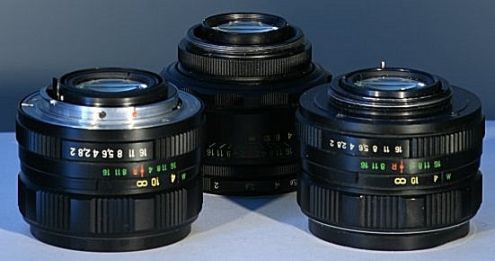 Three models, view on the backside, for the different mounts: Pentax K, M42 screw, M42 screw with aperture-command finger. The mount of the rear lens of the 44-2 protrudes more than the one of the other versions; if you adapt it on the Canon EOS 5D, the mirror bumps on it. (The K bayonet version is not compatible with the 5D, the mirror bumps on the aperture-coupling).
Three models, view on the backside, for the different mounts: Pentax K, M42 screw, M42 screw with aperture-command finger. The mount of the rear lens of the 44-2 protrudes more than the one of the other versions; if you adapt it on the Canon EOS 5D, the mirror bumps on it. (The K bayonet version is not compatible with the 5D, the mirror bumps on the aperture-coupling).
Tests: Please note that these tests were made with the means at hand, not in a "scientific" way. See here.
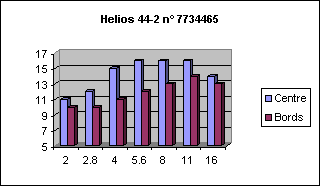
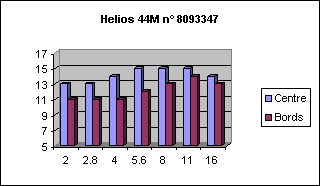
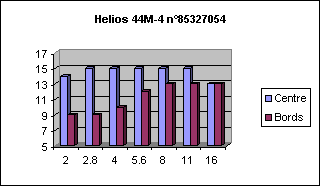 Here is a lens which career began in 1927 (designed by Willy Merté for Zeiss) and lasted until the 2000s. Nearly 70 year career, and it is still used ! Produced from 1958 in the USSR, its optical formula was recalculated several times without changing its main characteristics: excellent in the center, less good on the edges, it shows its really best quality only with the diaphragm closed to f: 8 or 11 . For the record, the "Biotar" formula" does not allow to design a 50mm lens leaving enough space for the mirror of a reflex camera, that's why it does 58mm.On my EOS 400D, it suffers from a problem of coma that disappears towards f:4-5.6. The non multi-coated versions are quite sensitive to backlight.
Here is a lens which career began in 1927 (designed by Willy Merté for Zeiss) and lasted until the 2000s. Nearly 70 year career, and it is still used ! Produced from 1958 in the USSR, its optical formula was recalculated several times without changing its main characteristics: excellent in the center, less good on the edges, it shows its really best quality only with the diaphragm closed to f: 8 or 11 . For the record, the "Biotar" formula" does not allow to design a 50mm lens leaving enough space for the mirror of a reflex camera, that's why it does 58mm.On my EOS 400D, it suffers from a problem of coma that disappears towards f:4-5.6. The non multi-coated versions are quite sensitive to backlight.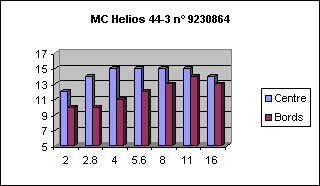
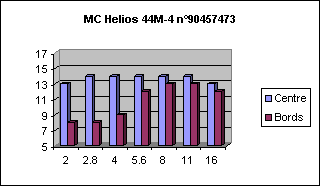
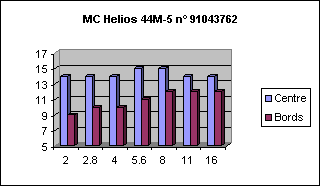
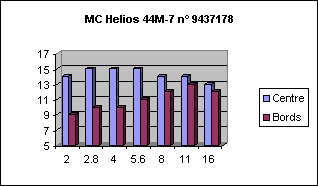 Testing by patterns do not allow to bring out the advantage of multi-coating. In these versions, the lens keeps its qualities in difficult lighting conditions, and the colors are more saturated. Personally, I avoid using them in larger openings, but as they are excellent in the center at full aperture, it is possible with centered subjects to play with the blurring of background. My favorite is the 44M-7. My 44-2 seems not bad either, but I cannot use it on the EOS 5D (same for the Belarusian 44-3) because the back protrudes a little too much and the mirror of the camera bumps on it.
Testing by patterns do not allow to bring out the advantage of multi-coating. In these versions, the lens keeps its qualities in difficult lighting conditions, and the colors are more saturated. Personally, I avoid using them in larger openings, but as they are excellent in the center at full aperture, it is possible with centered subjects to play with the blurring of background. My favorite is the 44M-7. My 44-2 seems not bad either, but I cannot use it on the EOS 5D (same for the Belarusian 44-3) because the back protrudes a little too much and the mirror of the camera bumps on it.
 Helios 44 & 44-2
Helios 44 & 44-2 Helios 44-3
Helios 44-3 Helios 44M, M-4,5,6,7
Helios 44M, M-4,5,6,7 Helios 44K-4
Helios 44K-4